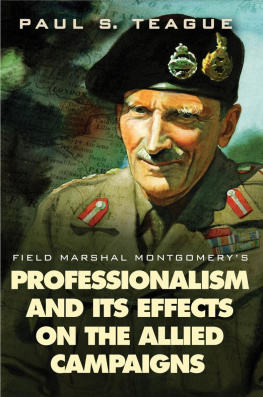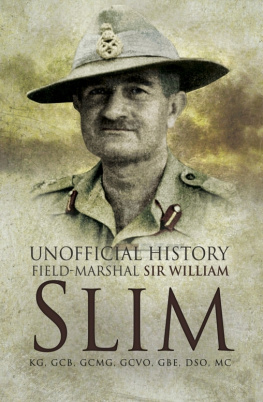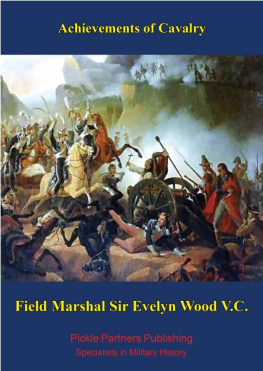This edition is published by PICKLE PARTNERS PUBLISHINGwww.pp-publishing.com
To join our mailing list for new titles or for issues with our bookspicklepublishing@gmail.com
Or on Facebook
Text originally published in 1841 under the same title.
Pickle Partners Publishing 2016, all rights reserved. No part of this publication may be reproduced, stored in a retrieval system or transmitted by any means, electrical, mechanical or otherwise without the written permission of the copyright holder.
Publishers Note
Although in most cases we have retained the Authors original spelling and grammar to authentically reproduce the work of the Author and the original intent of such material, some additional notes and clarifications have been added for the modern readers benefit.
We have also made every effort to include all maps and illustrations of the original edition the limitations of formatting do not allow of including larger maps, we will upload as many of these maps as possible.
LIFE OF FIELD-MARSHAL HIS GRACE THE DUKE OF WELLINGTON,
K.G. G.C.B. G.C.H. &C. &C.
BY
W. H. MAXWELL,
AUTHOR OF STORIES OF WATERLOO , THE BIVOUAC , &c. &c.
IN THREE VOLUMES
VOL. III
STEEL ENGRAVINGS IN THE THIRD VOLUME.
The DUKE of WELLINGTON entering the HOUSE of LORDS. Engraved by PETER LIGHTFOOT from a Picture painted by S. J. E. JONES, for this work
APSLEY HOUSE, the Town Residence of His Grace, drawn by G. B. CAMPION, and engraved by J. T. WILLMORE.
The CASTLE of BURGOS
PORTRAIT of LIEUT.-GENERAL SIR THOMAS PICTON. Engraved by COOK from the Picture by Sir WILLIAM BEECHY
PLAN of the BATTLE of VITORIA, June 21, 1813
PORTRAIT of MARSHAL SOULT. Engraved by PETER LIGHTFOOT from a Painting by ROUILLARD
PORTRAIT of COLONEL SIR ROBERT GARDINER. Painted by J. R. WILDMAN, and engraved by PETER LIGHTFOOT
PASSAGE of the BIDASSOA
PLAN of the BATTLE of ORTHEZ
CHARGE of the 7 TH HUSSARS at ORTHEZ. Engraved by PETER LIGHTFOOT from the Picture painted for this work by A. COOPER, R. A
PLAN of the BATTLE of TOULOUSE
MAP of MILITARY OPERATIONS in BELGIUM, and PLAN of the BATTLE of QUATRE BRAS, June 16, 1815
The FIELD of WATERLOO at 7 P.M., June 18, 1815
The DECISIVE CHARGE at WATERLOO. Painted by A. COOPER, R. A., and engraved by PETER LIGHTFOOT
The RETREAT from WATERLOO. Engraved by A. W. WARREN from a Picture by J. GILBERT
In addition to the above Steel Engravings, this volume contains a great variety of beautifully engraved Wood Cuts.
LIFE OF ARTHUR DUKE OF WELLINGTON, ETC. ETC.
CHAPTER I.
SALAMANCAOPENING OF THE BATTLEPAKENHAMS ATTACKCHARGE OF THE THIRD DIVISIONFRENCH OFFICERS KILLED AND WOUNDED RALLYCHARGE OF THE HEAVY CAVALRYAND RUIN OF THE FRENCH LEFT WINGATTACK ON THE ARAPILES FAILS, AND THE FOURTH DIVISION IS DRIVEN BACKSIXTH DIVISION ADVANCESTHE FRENCH FINALLY DEFEATEDESCAPE BY ALBA DE TORMESAFFAIR AT LA SERNAWELLINGTON ENTERS VALLADOLIDGUERILLA MOVEMENTSMILITARY AND MORAL RESULTS OF THE BATTLE OF SALAMANCA.
WERE it desired to present in scenic variety the varied changes in the game of war, the period from the time that Wellington crossed the gueda, until the ruined army of his rival passed the Tormes in darkness and defeat, would be most happily selected. Brief as that interval was, more than ordinarily marks a soldiers life had happened. The siege and stormthe advance and the retreatthe march of manuvreuntil after long coiling and winding, the armies came together, and drawing up their huge trains like angry serpents, mingled in deadly strife, {1} a last grand effort, terminating a series of splendid operations, conducted with matchless skill, and closing with a decisive victory.
No conflict had been so long desired, and none more unexpectedly brought on. The baggage of the allied army was moving towards the Rodrigo road; the commissariate had already retired; evening was coming fast; and still no note of preparation indicated that the storm of battle was about to burst. Marmont, fearing that his cautious opponent would avoid a contest by retreating, hurried his own dispositions to force a battle, and Thomires division, with his light cavalry and fifty guns, was put in rapid march. The centre columns were debouching from the forest, and Lord Wellingtons corresponding movement was to be Marmonts signal to fall on. {2} Suddenly, the inactive masses which hitherto had been resting on the English heights, assumed a threatening attitude. Was it a feint? A few minutes removed that doubtthe allied brigades closed up rapidly on each otherand the third division, in four columns, rushed down the hill, and he who would have been the assailant was assailed!
Unchecked by a furious cannonade, Pakenham crossed the hollow between the high grounds occupied previously by the opposing forces; scattered the light troops who would have stayed his progress; and pressing up the hill, without pausing to deploy, the regiments brought their right shoulders forward in a run, and, without halting, formed line from open column. No troops were ever more nobly led; and none advanced under showers of grape, and a heavy tiraillade, with more imposing steadiness. The crest was gained. The French line commenced firing, beat the pas de charge, and moved forward a few paces; but, undauntedly, Wallaces brigade closed up ranks necessarily disordered by a rapid advance over irregular ground, and all pushed boldly on.
The French, alarmed by this movement, became unsteady. The daring advance of an enemy, whom the concentrated fire of five thousand muskets could not arrest, was indeed astounding. All that brave men could do was done by their officersas they strove to confirm the courage of their troops, and persuade them to withstand an assault that threatened their wavering ranks. The colonel of the 22 nd legre, seizing a musket from a grenadier, rushed forward, and mortally wounded Major Murphy of the 88 th . Speedily his death was avengeda soldier shot the Frenchman through the head, who, tossing his arms wildly up, fell forward and expired. The brigade betrayed impatience; and the 88 th , excited to madness by the fall of a favourite officerwho passed dead along their front, as his charger galloped off with his riders foot sticking in the stirrupcould scarcely be kept back. Pakenham marked the feeling, and ordered Wallace to let them loose. The word was givendown came the bayonets to the chargethe pace quickeneda wild cheer, mingled with the Irish hurra, rent the skiesand unwilling to stand the shock, the French gave ground. The Rangers, and the supporting regiments, broke the dense mass of infantry, bayoneting all whom they could overtakeuntil, run to a stand-still, they halted to recover breath, and stayed the slaughter. {3}
Marmont, perceiving the error he had committed, endeavoured to redeem it by issuing orders to halt the marching by his left, and hurry on the movement of his centre columns, and thus reconnect his severed line. But at this moment, a howitzer shell shattered his arm, lacerated his side, and obliged him to be carried from the field. Bonet, who succeeded to the command, was also badly wounded; and the task of restoring the fortunes of the day devolved upon Clausel. Thomires had fallen at the head of his division; Foy and Ferrey were among the wounded; and thus, the confusion incident to a sudden attack was increased, when the example and exertions of superior officers were most required to arrest the growing disorder, which otherwise threatened to end, as it did, in a general droute.












